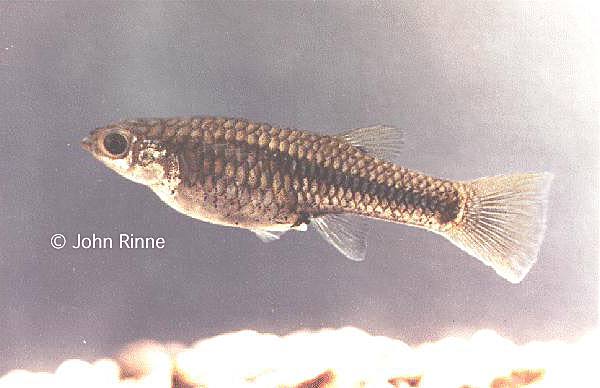Evolution and Sex
![]()
Lively and
Vrijenhoek investigated the Red Queen hypothesis in an excellent study of the
host-parasite relationship between sexual and asexual populations of the fish,
Poeciliopsis monacha (topminnow) and the trematode, Uvulifer sp. (black
spot disease)11.

Both sexual
and asexual topminnows coexist in nature. One assumption of the Red Queen
hypothesis is that parasites should disproportionately attack the most common
phenotype. Lively and Vrijenhoek counted the number of cysts infecting the fish
in three pools near Sonora, Mexico. In two pools,
the asexual clone was the most common and also the most parasitized.
The pools
became separate during a drought in 1976. The sexual topminnows became extinct
in one pool, but were later recolonized by downstream
populations. This occurred slowly, and a founder effect resulted in a genetically
uniform population. Now the sexual population had a significantly higher
proportion of parasitism. They did not have the variability that the sexual
populations in the other pools had.
Lively and
Vrijenhoek transplanted sexual females from
downstream to add genetic diversity. After the transplant, the asexual
population became disproportionately infected, the opposite of before the
transplant. These observations are consistent with the Red Queen hypothesis.
![]()
So it is necessary, at least intermittently..., this thing called sex. As of course you and I knew it must be. Otherwise surely, by now, we mammals and dragonflies would have come up with something more dignified. — David Quammen12
![]()
|
Topminnow |